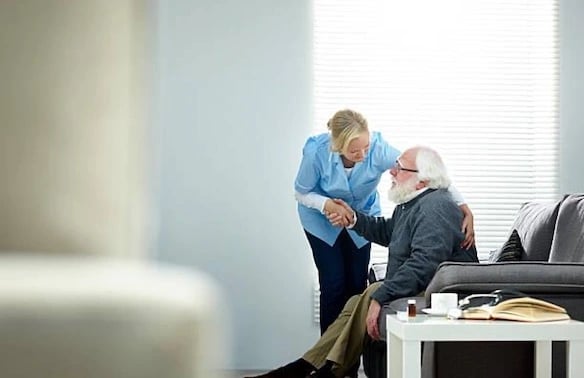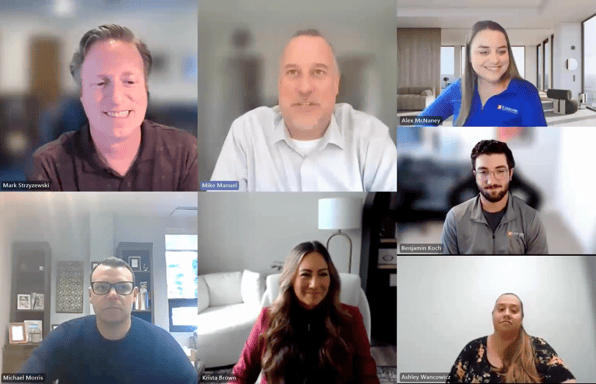8 Ways to Increase Resident Safety in Senior Living Communities

The population of older adults in the United States is expanding, and it has caused the entire assisted living sector to react. Senior housing occupancy rates in the U.S. have increased for the seventh consecutive quarter, indicating that the industry is keeping pace with the aging population.
But between the growing number of older adults and expanding senior living sector, it’s important to realize how this growth and rapid expansion might affect resident safety in assisted living communities. Resident well-being is paramount and a primary reason why residents and their family members choose to make a particular senior living community their home.
Of course, safety can be a complicated issue, and senior living operators and caregivers need to be aware of potential risks and how to implement measures to address safety issues. In this article, we’ll review eight resident safety tips that everyone should follow in long-term care settings.
8 Important Resident Safety Tips To Know
No one can guarantee absolute safety in senior living. After all, older adults are more prone to risk and injury, and accidents do happen. However, there are things you can do to improve the overall safety of your communities. Here are our top eight evidence-based safety and quality improvement tips:
1. Adequate staffing
We can’t stress the importance of proper staffing enough! It’s critical to have an optimal staff-to-resident ratio, which each community determines based on size and scope. When operators and care providers aren’t overwhelmed or pushed to the brink, they are happier, more efficient, and less prone to making errors that could affect safety outcomes. Additionally, consider conducting a periodic systematic review of staffing levels and qualifications to further enhance safety.
Tip: We walk through tactics that senior living teams can take advantage of to easily hire the right staff and increase staff retention in our eBook The Secret to Stable Staffing and Occupancy During the 'Great Resignation' grab the eBook here.
2. Medication management
Medication errors pose a significant risk to resident safety, as they can lead to drug-related health complications in older adults. Ensuring medication safety is a critical responsibility of clinicians and assisted living operators. For prevention, caregivers should keep a meticulous record of every resident’s interactions with medications in their medical records. Additionally, they should ensure that only those with the necessary permissions administer medication.
You can also use an electronic medication administration record (EMAR) system to improve safety by dramatically reducing the rate of common mistakes. As resident populations grow, the likelihood of these mistakes (and their potential consequences) rises, underscoring the need for a more reliable system of record-keeping.
3. Infection prevention and control
Older adults are at higher risk of infections, which can spread rapidly and wreak havoc in senior living communities. Policymakers, then, should create proactive infection prevention protocols, such as frequent hand-washing, regular cleaning and disinfecting of surfaces, and isolation of infected individuals, which can significantly reduce infection rates.
Highlighted by the COVID-19 pandemic, infection control management is a top priority. Powerful software tools are making it simpler to manage. Watch our latest webinar and hear from providers on best practices when implementing infection control management software.
4. Fall prevention
An older adult falls daily in the United States, with accidental falls accounting for thousands of preventable injuries each year. These falls are everyday adverse events that decrease quality of life, especially in communities where seniors are engaged and active.
Although falls are one of the most common safety risks to residents in senior care settings, there are some things you can do to reduce their incidence rates. For instance, interventions such as regular mobility assessments, installation of handrails, and creation of clutter-free environments can significantly improve resident safety.
Software solutions like WISDOM2ACT enable caregivers to record and track resident condition changes from any device in real-time. Once a change is reported, your clinicians and nurses will be notified with needed information to provide appropriate care as quickly as possible. Getting ahead of changes in resident conditions can help senior living teams provide preventive care and prevent adverse events like falls.
5. Frequent health checks, monitoring, and assessments
The health status of residents in an assisted living environment can change from day to day or hour to hour. There are many moving parts, and vigilant risk management requires frequent assessments and monitoring to bring peace of mind to residents. As senior living communities expand, so does the likelihood of mistakes or oversights.
One way to overcome these challenges is through Eldermark’s integrated risk-management system, which is specifically designed to deal with the nuances of senior living. Through centralized management, robust assessment, and data collection, your risk assessment protocols will become more dynamic, responding to new information in real-time to prevent adverse events.
Talk with one of our software experts about how Eldermark’s solutions can mitigate risk and keep your residents safe.
6. Encourage family involvement
Family plays a crucial role in resident safety. Fostering partnerships with family members is important when you are creating a supportive environment where everyone knows how to contribute to increasing safety. This can mean various things for different families, and the best way to determine them is by cultivating relationships.
Utilizing family engagement software like Eldermark’s engage allows your residents and their families the ability to stay connected, no matter how often they’re able to visit your community. The right software can help natural supports to feel like they’re part of the community by seeing activity participation, looking through photo galleries, and getting updates from caregivers.
7. Staff education and training
Besides common issues such as first aid and medication administration training, senior living staff should receive regular, ongoing education related to senior needs. One key element of staff training is emergency preparedness, with specific protocols, drills, and procedures that apply to various situations.
The Department of Health Agency for Healthcare Research and Quality (AHRQ) offers various initiatives and training resources to improve the quality of care and cultivate a culture of safety in assisted living settings.
8. Embrace new technology
The purpose of technology is to make your critical work easier but also to make your services safer for your residents. Digital solutions enhance health services and significantly improve every facet of senior living community management, including resident safety.
For instance, Eldermark’s WISDOM2ACT™ solution allows caregivers to record and track condition changes in real-time, enhancing resident quality of life through timely interventions. WISDOM2ACT™ is designed to send alerts of changes in resident acuity, helping reduce leaves of absence by promoting proactive care.
Eldermark | Solutions that Put Resident Safety First
Choosing the best senior living software to address your community’s needs in a saturated market can be challenging.
Luckily, Eldermark’s team is staffed with former senior living caregivers and operators, so we understand exactly what it takes to run a thriving community, as well as the pain points your staff is running into everyday.
Our built-in risk management tool stays on top of potential risks, including ensuring that regulatory authority requirements are met. Additionally, WISDOM2ACT™ provides operational risk effectiveness through proactivity and dynamic, risk-averse systems.
Contact us for a free consultation to demonstrate how Eldermark’s software solutions can save money while bringing safety and peace of mind to your senior living communities.




